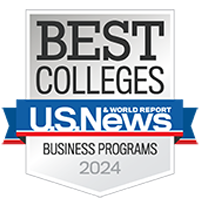Scott Tainsky's research highlighted on Athletic Director U website
The following article was written by Steve Salaga of the University of Georgia, a co-author of the Ilitch School's Sport and Entertainment Management Director Scott Tainsky.
FBS Power conferences generate millions of dollars each year from the sale of their broadcasting rights to national and cable networks. The size of these contracts have risen sharply over time and represent massive guaranteed revenue streams which help fund the operation of programs, coaching salaries, and the construction and renovation of facilities.
To illustrate the size of these contracts, let’s take the SEC as an example. In the most recent fiscal year, the conference reported $420M in revenue from the sale of its broadcasting rights. This is roughly $30M for each SEC program and represents approximately 30% of total annual revenues for the low-end SEC revenue generators and 15-20% for the high-end revenue programs. It is clear that consumer interest in elite college sport is strong and television revenues are vital to the manner in which athletic departments currently function.
One component of consumer demand that has long been disregarded by the mainstream is the interest that stems directly from the sports betting market. The link between betting market interest and television viewership has been hypothesized for decades, but because sports gambling is largely illegal and widely considered taboo in the United States, professional leagues and the NCAA have openly opposed its presence.
This has left the nature of the link between sports gambling and television viewership to perception and anecdotal evidence. Recently however, my co-authors and I published two peer-reviewed articles which 1) verify that there is a statistically significant relationship between the college football betting market and television viewership and 2) produce estimates of the size of this relationship. In other words, we find that uncertainty in betting market outcomes is directly related to size of television viewership audiences and the magnitude of the effects are substantial.
In a paper I wrote with Scott Tainsky (now in the Mike Ilitch School of Business at Wayne State University), we illustrate that local market television ratings are sensitive to the point spread outcomes of Pac-10 (now Pac-12) games. We made the decision to focus on games that were not anticipated to be close, nor in actuality were close, in order to eliminate match-ups where the actual outcome of the contest would drive viewership interest.
We find ratings are significantly higher in contests where late in the game the actual scoring margin moves closer to the point spread. More specifically, if a fourth-quarter touchdown moves the scoring margin closer to the point spread (i.e., USC was favored over Oregon State by 21 and Oregon State scores a touchdown to cut the USC lead to 44-21), local market ratings, on average, increase by approximately 30% of the full-game rating.



